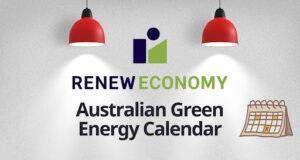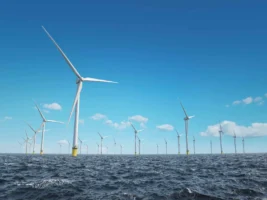SunPower’s C7 low-concentration PV tracker is now a multi-megawatt-scale business and has given SunPower a small but promising foothold in China.
The vertically integrated solar manufacturer and developer just announced that it is selling more than 70 megawatts of its “cell package” to the Huaxia Concentrated Photovoltaic Power Joint Venture in high-DNI Inner Mongolia.
The joint venture includes:
- SunPower (SPWR)
- Tianjin Zhonghuan Semiconductor (TZS is an enormous alternative energy and semiconductor firm)
- Inner Mongolia Power (outside the National Grid and China Southern Grid, IMPC is the only provincial-level independent power grid company)
- Hohhot Jinqiao City Development (a state-owned infrastructure project developer)
A 300-megawatt C7 receiver manufacturing facility has already been set up in Hohhot (say it again: Hohhot, Inner Mongolia). A 50-megawatt production line is now in operation, according to a release. This 70-megawatt sale is the first toward a total of 120 megawatts in two projects slated to be completed in 2015.
The LCPV architecture from SunPower is a single-axis tracker with rows of parabolic mirrors, bouncing sunlight onto SunPower’s high-efficiency solar cells.
SunPower has claimed that its C7 Tracker has up to a 20 percent lower levelized cost of electricity (LCOE) than competing technologies. The firm maintains that the C7 tracker provides “the lowest levelized cost of electricity for utility-scale solar power plants available today.” SunPower also said that “a 400-megawatt C7 Tracker power plant requires less than 70 megawatts of SunPower solar cells.”
The concentrator would effectively allow the company to increase the power output of its utility-scale solar plants at a time when gaining silicon cell efficiency and capacity is more challenging. SunPower mass-produces monocrystalline solar cells with an efficiency of more than 23 percent.
Concentrators work best in high-DNI regions, and that applies to low-concentration PV as well. Previous efforts in the LCPV space, such as the now-defunct Skyline Solar, have been less than successful. Cogenra has a LCPV system in tandem with a hot-water CHP system that has gained some customers. But if SunPower has really solved the CPV cost riddle in a market where solar LCOE continues to fall, this is a big announcement. SunPower has not yet shared C7 costs or the costs of this project.
We spoke with SunPower CEO Tom Werner while he was taking a break between TV interviews in New York City. He said that this is the first of SunPower’s “aggressive efforts” to move into China, which will again be the world’s largest solar market in 2014.
Werner described a unique supply chain for this project that promotes American and Chinese jobs, while solar-cell IP is preserved and tracker IP is shared.
SunPower sells the “cell package” to the manufacturing JV. The cell package that SunPower is providing to the JV is “not quite a receiver,” according to Werner. Rather, “it’s a strip of cells mounted on a laminate,” and it needs a heat sink and some other steps in order to be completed.
SunPower is a partial owner of the manufacturing JV and a project advisor to the development JV. Total was not mentioned in the proceedings, but the French firm’s backing of SunPower is a good international calling card.
Inner Mongolia is renewables-friendly, with 10 gigawatts of wind already built and “lots of transmission, good DNI and clear skies,” according to Werner. The CEO said that SunPower’s C7 future was not just in Inner Mongolia. He added, “This is just the beginning.”
Source: GreenTech Media. Reproduced with permission.











